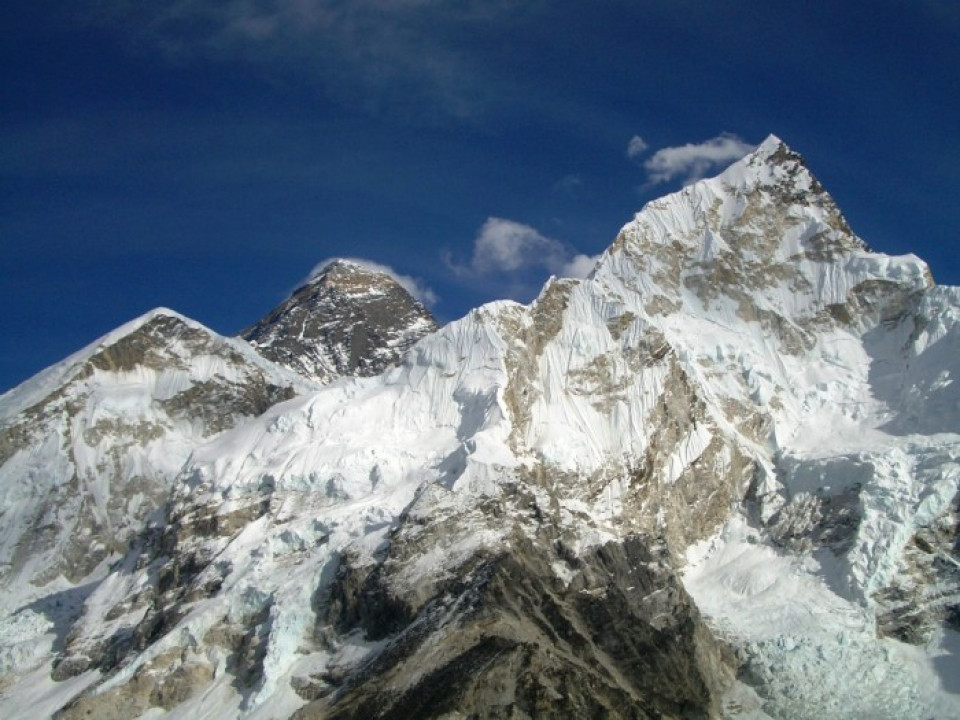- 15, Jun 2024 |
- adventuremagic.com

Best Time to Trek Everest Base Camp
Best Time to Trek Everest Base Camp
It may surprise you to learn that it is possible to trek to Everest Base Camp in Nepal through nearly every season. Nonetheless, there is undoubtedly a peak season for one of the world's greatest treks. It is thought that October through November is the ideal period to visit Everest Base Camp, and March through May is seen to be the greatest season.
There are other benefits to walking on one of the top trek routes in the world during other seasons as well, even during the peak seasons. This blog will walk you through a season-by-season preparation plan for your Everest Base Camp trek. You may also take into account the advice of other well-known treks in Nepal, such the Manaslu Circuit Trek, the Annapurna Base Camp Trek, and the Annapurna Circuit Trek, to mention a few.
Spring Season (March-May)
Monsoon Season (June- August)
Fall Season (September- November)
Winter Season (December- February)
Spring Season (March-May)
The ideal seasons to trek to Everest Base Camp are thought to be in the spring. The weather in the spring is generally stable and ideal for climbing at high altitudes.
In addition to the pleasant weather, the trail's bright rhododendrons and enticing views of the beautiful sky are highlights. But there's a cost associated with the greatest season and ideal weather. It's the high season, so there is a fair amount of crowding in the area.
Springtime trekking in the Everest region is one of the greatest times to reach Everest Base Camp.
Everest Trek during Spring Season
Furthermore, May is the ideal month to climb Island Peak, Lobuche Peak, and Mount Everest, as well as other nearby summits. The peak season, of course, attracts a large number of climbers and members of their support crew. Let's just say that you will make lots of friends if you hike to Everest Base Camp in the spring.
You might be interested in this: Beginning in 2015, Adventure Magic Treks will provide overnight stays at Everest Base Camp. In contrast, in the past, hikers needed to return to Gorak Shep in order to spend the night.
Monsoon Season (June- August)
In general, trekking in the monsoon season is a difficult undertaking. The trails might get muddy and even dangerous during the rainy season.
Higher elevations, however, typically see less rain. Thus, the Everest Base Camp Trek is not that uncommon if you are well-prepared and the rainy weather doesn't bother you. However, you need to use a little more caution.
Everest Base Camp trek during Monsoon Season
In addition, the monsoon season is often regarded as off-season, allowing for more tranquil and disturbance-free trekking. In addition, you get to see the most breathtaking views of the Himalayas in the mornings during the monsoon.
However, we also offer an alternative for you called the rain shadow trek, which is located in places with very little rainfall, if you still want to hike during the monsoon but don't want to be soaked in the rain. The most rewarding rain shadow journeys are the Upper Mustang Trek, Dolpo journeys, and the Simikot to Mount Kailash trek in Tibet.
Autumn Season (September- November)
Trekking to Everest Base Camp is also recommended in the fall, following the spring season. Fall, which spans from September to November, is also characterized by sunny skies, comfortable temperatures, and a lower likelihood of inclement weather or snowfall.
Fall brings with it a somewhat colder temperature than spring does. However, that is a small price to pay for the captivating views of the neighboring peaks that this season offers. In addition, you can get some light fall in the early fall months. However, there is obviously cause for concern regarding the views following those unexpected downpours.
Additionally, as one of the best seasons is fall, you will have the opportunity to meet a lot of other tourists from around the globe.
Winter Season (December- February)
For the Everest Base Camp Trek, the winter months are regarded as the off-season. The region experiences its coldest days in the winter, with lows of -17°C (1.4°F).
Although the Everest Base Camp Trek may appear difficult at this time of year, it is not completely unfeasible. The trail has been hiked by many ardent hikers even in the winter.
Gorgeous image of the Everest region taken in the winter, which is also the greatest time to walk to Everest Base Camp if you like the snow
Everest Base Camp Trek during Winter Season
Winter can be a great time for true adventure, as long as you're prepared for the cold. You get to enjoy spectacular mountain views and clean skies. All you have to do is prepare correctly. Also, winter is the ideal season to avoid competing for space with other travelers. Because it is considered off-season, the Everest region receives less visitors throughout the winter.
In addition, Nepal's tourism business has recently introduced a variety of winter sports. Ice skating and skiing on Gokyo Lake and Mera Peak are new attractions in Nepal's winter paradise.
Fun Fact:The well-known Mount Everest cannot be seen from its Base Camp. To reward yourself with a sight of the magnificent peak, you will need to spend an additional day climbing Kala Patthar (18,513 feet/ 5, 643 meters).
How Difficult Is Everest Base Camp Trek?
Given that Everest Base Camp is situated at the base of the world's highest summit, it is understandable that the trek sound daunting. On the other hand, finishing the hike up to Base Camp has a pretty moderate difficulty level.
That being said, the trail to the world's highest peak winds over rugged hillsides for several days, making the hike challenging as well.
Other Blogs

Everest Base Camp Trek Cost For 2023 & 24



